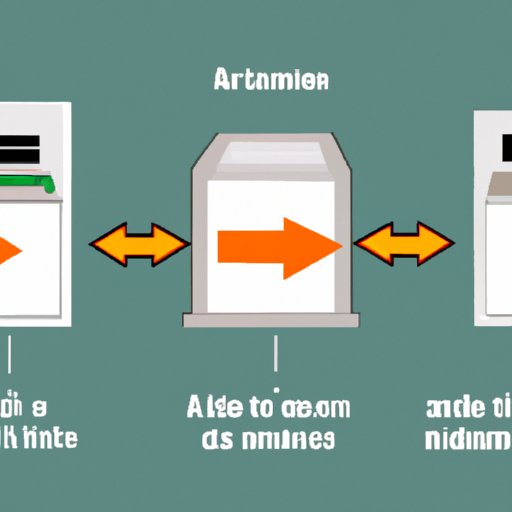
Introduction
ATMs (Automated Teller Machines) are ubiquitous, making it convenient for people to withdraw cash anytime and anywhere. However, there are limits to the amount you can withdraw in a day, which raises the question: how much money can you withdraw from an ATM?
Understanding ATM Withdrawal Limits: How Much Cash Can You Take Out in a Day?
ATM withdrawal limits can vary by bank, but the most common daily limit is $500. Some banks have higher limits, such as $1,000 or $1,500, while others have lower limits, such as $300. These limits exist to protect consumers and banks from fraudulent activities and ensure that there is enough cash in the ATM.
If you need to take out more than the daily limit, some banks offer temporary increases, but this requires planning ahead and contacting your bank.
Unexpected Fees: What to Know About ATM Withdrawals
The first fee you might encounter is the out-of-network fee. If you use an ATM that is not affiliated with your bank, you may be charged a fee by both the ATM owner and your bank. This is usually a flat fee, ranging from $2 to $5.
The second fee is the foreign transaction fee. If you use your ATM card in a foreign country, your bank may charge you an additional fee for the transaction, usually 1-3% of the total withdrawal amount.
To avoid these fees, plan ahead and find banks with no ATM fees or those affiliated with your bank. If you are traveling internationally, consider using a credit card or withdrawing cash in advance.

The Pros and Cons of Large Cash Withdrawals from an ATM
Taking out a larger amount of cash than usual from an ATM might be convenient for some, but it also comes with potential risks. For instance, walking around with a large sum of money can make you a target for theft. On the other hand, it eliminates the need to go to the bank frequently, saving you time in the long run.
If you are considering a large cash withdrawal, weigh the risks and benefits and consider alternatives, such as a bank transfer or cashier’s check.
Internet Safety: Tips for Safe ATM Withdrawals
Unfortunately, ATM fraud has become increasingly common, with thieves using skimming devices to steal card information. To avoid falling victim to such scams, take precautions such as using ATMs in well-lit, public areas, and check for any irregularities on the machine’s card reader.
Additionally, consider using ATMs that use chip authentication or biometrics such as fingerprint or facial recognition.
The Future of ATM Withdrawals: A Look at Emerging Technologies
The evolution of mobile technology has started to shape the ATM industry. Mobile ATMs that can be accessed with the use of a smartphone are slowly being introduced, with some being fully functional and able to dispense cash. Biometric authentication technology, such as iris and face recognition, is also becoming more common for security purposes.
These emerging technologies have the potential to make ATM transactions more secure and convenient for consumers.
Getting the Most out of Your ATM Card: How to Maximize Withdrawals
There are several ways to maximize ATM withdrawals. One way is to use cashback programs, where you can get rewards for using your card to take out cash. Another is to find banks with no ATM fees, so you don’t get charged for using an out-of-network ATM.
To make the most of your ATM card, understand your withdrawal limits and plan ahead so that you don’t exceed them.
Smart Ways to Budget Your Cash with ATM Withdrawals
Using ATM withdrawals wisely can be an essential part of budgeting. The envelope method is one strategy, where you separate your bills into different envelopes based on spending categories. This way, you can track where your money is going and control your spending.
Tracking your spending can also help you avoid overdraft fees and adjust your spending habits.
Conclusion
ATM withdrawals are convenient, but it’s essential to be aware of withdrawal limits, fees, and safety issues. To get the most out of your ATM card, plan ahead, and follow smart budgeting strategies. With future technology upgrades, it’s possible that the convenience and safety of ATM transactions will only improve.





